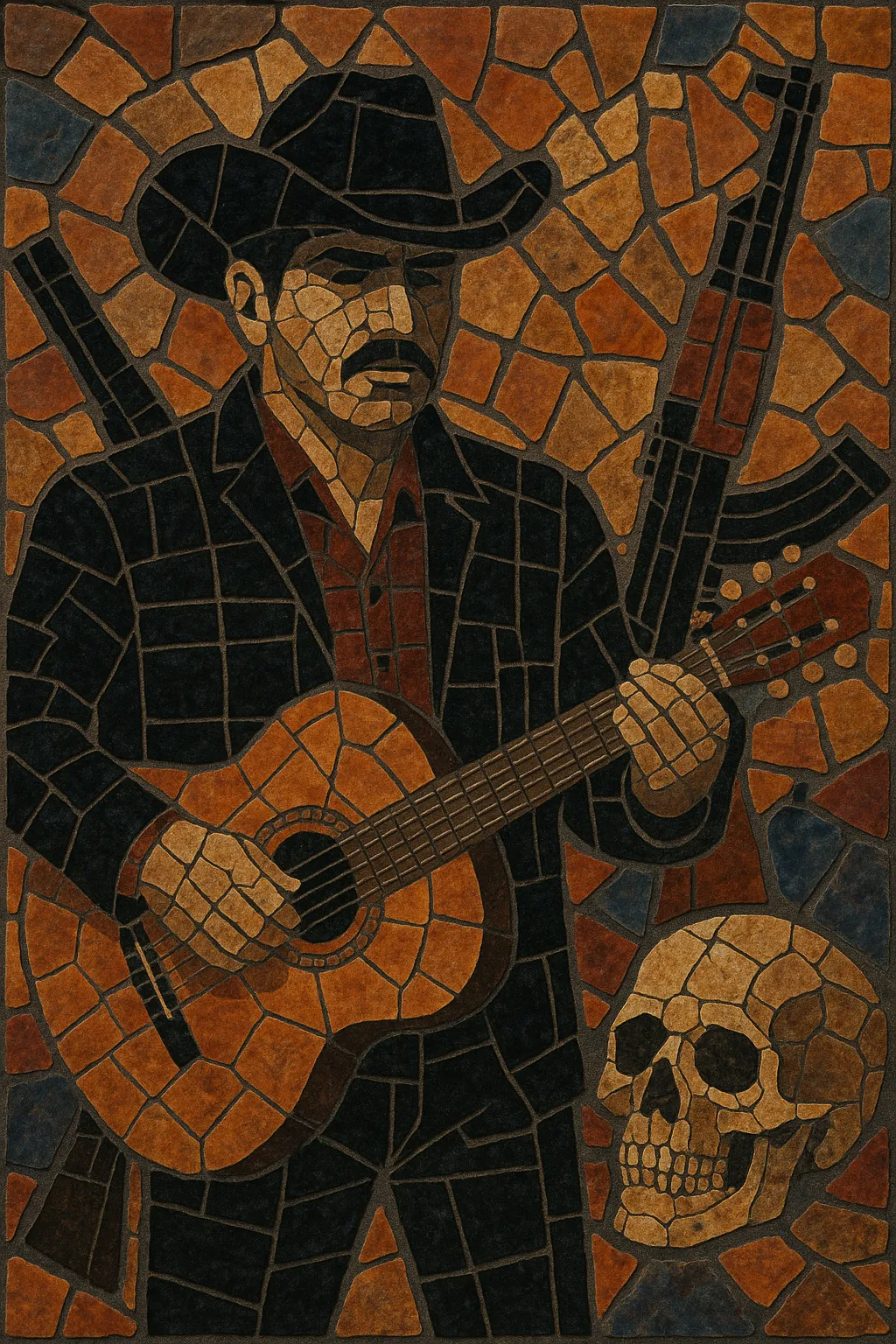Movimiento alterado is a contemporary offshoot of the Mexican corrido tradition that foregrounds hyper-violent, adrenaline-charged storytelling and hard-hitting, brass- or guitar-led arrangements. It is closely tied to the "corridos alterados" wave, in which first‑person narratives, military jargon, and explicit depictions of cartel life are delivered with swaggering vocals and propulsive rhythms.
Musically, the style draws on banda sinaloense and norteño/sierreño instrumentations: blasting tambora and tarola (snare), tuba bass lines, and tight trumpet/trombone/clarinet riffs on the banda side; or rapid 12‑string guitar (requinto), accordion, and bass/tuba on the sierreño/norteño side. Harmonies are typically bright and functional (I–IV–V), while the feel is often polka‑like two‑step. Production emphasizes loud, saturated brass and percussion, catchy unison riffs, and breakneck fills that amplify the lyrical bravado.
Culturally, movimiento alterado was propelled by labels and promoters who packaged and marketed the sound and image—dark attire, tactical aesthetics, and viral videos—toward Mexican and Mexican‑American audiences, especially across Sinaloa, Sonora, and the Los Angeles diaspora.
Movimiento alterado grows out of a century of corrido practice—narrative ballads that chronicled heroes, outlaws, and social conflict. Through the late 20th century, narcocorridos (popularized by figures like Chalino Sánchez and groups such as Los Tigres del Norte) pushed the corrido toward contemporary underworld themes, setting the stage for a more graphic, high‑octane evolution.
Around 2009–2011, a cluster of artists and labels—especially in Los Angeles’ Mexican‑American scene with deep roots in Sinaloa and Sonora—branded and amplified the sound under the banner "Movimiento Alterado." Compilation releases, music videos, and social media catalyzed a recognizable aesthetic: faster, louder corridos with explicit first‑person narratives, banda or sierreño arrangements, and a bold, militarized presentation.
By the mid‑2010s, acts associated with the movement were charting and touring widely on both sides of the U.S.–Mexico border. The lyrical extremity drew media attention and periodic governmental pushback in parts of Mexico (bans, canceled concerts), which paradoxically increased notoriety. The scene diversified into banda‑driven and sierreño‑driven formats while maintaining the defining lyrical stance and sonic aggression.
Movimiento alterado refreshed the commercial and stylistic profile of corridos, directly informing later waves—most notably the aggressive “corridos bélicos” and, indirectly, crossover hybrids that fuse corrido instrumentation with modern urban production. Its imprint endures in today’s regional mexicano landscape, where high‑energy narratives, booming tuba lines, and viral visual storytelling remain key.


